Stick and poke tattoos. DIY tattoos. Homemade tattoos. Hand poke tattoos. Thai bamboo tattoos…
These all refer to the same tattooing technique our ancestors have used for ages. But this ancient, time-tested technique refuse to die out. Instead, it’s even making a comeback in today’s youths. Are you thinking of getting one? Read on to find out if this is the right tattooing technique for you!
Page Contents
But first, what are stick and poke tattoos?

Stick and poke tattoos are usually simple pieces like these (Photo by Elizabeth Tsung).
Well, these are tattoos done by hand (no machinery involved). This manual technique involves these steps:
- Dipping a sharp object (like a needle) into ink, and then
- Repeatedly poking the skin using the needle to deposit or insert the ink in the skin’s dermis layer.
As you can probably imagine, this process is a whole lot slower (and sometimes more painful) than modern tattooing techniques. It’s the same principle, of course, but highly inefficient since you’re only using a single needle.
With each proper poke, you get one tiny dot of ink embedded in your skin. The good news, however, is that you get quite a few more breathers with poke tattoos because the ink needs to be refilled more often than machines.
It’s therefore not surprising that most stick ‘n poke tattoos are usually small in size. It will be extremely difficult to do a full sleeve using this ancient method (it’s doable but not the best way to go about it!).
That said, DIYing tattoos have recently increased in popularity. And with skyrocketing prices of professionally-done machine-made tattoos, this trend is not surprising at all. According to Meg Zulch who lived on a college campus, she’s “surrounded by people giving and receiving stick and poke tattoos.”
Now, depending on where you live, professional tattoos can cost an arm and leg, but stick ‘n pokes can be had for cheap – or even free. Perfect for a college student’s budget!
How stick and poke tattooing works
Alright, so here we are at the most exciting part of this article! Here’s what you’ll need to get started with poke tattoos.
Stick and poke tattoo tools
In the old days, you only needed two things, a sharp-tipped tool and the ink/pigment. Of course, nowadays, there’s a whole bunch of things you need to prepare for if you don’t want your new amateur skin art to get infected.
Required:
- Sterilised tattoo needle
- Tattoo ink or india ink (no pen ink please!)
- Thread to wrap around needle and absorb ink
- Pencil or something similar to support needle
For hygiene and sanitation:
- Medical-quality gloves
- Cotton pads (also known as makeup remover pads)
- Kitchen roll or hand paper towels
- Green soap to disinfect surfaces including skin
- Cling film or sterile bandage to protect tattoo afterwards
Optional:
If you’re going to be tracing your tattoo, you’ll need tattoo transfer paper and skin marker pen. Otherwise, you can skip these and just free-draw the tattoo directly on skin.
Also, if you don’t want to go through the hassle of buying each material one by one, you can buy a complete stick & poke tattoo kit. The caveat is this will be a more expensive option.
But if you’re a newbie and you don’t know what you’re doing, a complete kit should help you out. Some even include a silicon skin you can practice on, before you tattoo actual skin (yours or someone else’s!).
How to stick and poke tattoo – the process
Here’s a short demo video which I think explains the process best. Check it out:
Pros and cons of stick ‘n pokes
Let’s weigh in on whether getting a poke tattoo is a good idea. Here are some pros and cons of this technique:
The positives
- It’s extremely cheap, and in some cases, even free
A simple needle and thread plus some ink is literally all you need to have for your very first tattoo – simple items you most likely already have at home. If not, you can get these supplies for a few quid.
- It’s a bonding opportunity with friends
What better way to make memories with friends than to literally leave a mark on their skin? A lot of young people do S&P’s on a whim or dare. But hey, it’s fun, right? And for many, that’s really all that matters.
- If done right, can look really nice
DIY tattoos look far from professional, but it does have a certain appeal to it. Most homemade tattoos look really cool and cute – two things young people are really into!
- It’s personal
I mean, all tattoos are personal. No one’s forcing you to go under the needle, after all. However, poke tattoos are usually done by friends on each other, which makes the experience totally unique and memorable.
The negatives
- More time-consuming
One poke is one dot. A small tattoo can take upwards of 1-2 hours whereas a machine can get the whole thing done in under 30 minutes.
- Riskier and less sanitary than professionally done tattoos
Obviously, homemade tattoos will be riskier than those done in studios. The tattoo industry is heavily regulated in the UK. And professional tattooists take great care at ensuring their workplace is sterile for tattoo sessions.
Tattooing, after all, is a process that involves pricking and cutting the skin. If done in an unsanitary place, the risks dramatically increase, which is, unfortunately, the case with homemade tattoos.
- Won’t be winning tattoo design awards
Poke tattoos are cute, yes, but they’re not nearly as intricate and detailed as machine-made ones. ‘Real’ tattoos – depending on the design and the artist – can look amazingly lifelike, like this one:
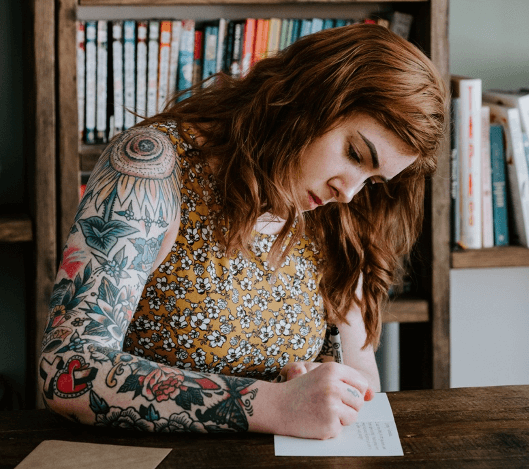
Machine-made tattoos are vibrant and can be life-like (Photo by Annie Spratt)
- Fades faster than ‘real’ tattoos
Even the steadiest hands on the planet can’t compete with a tattoo machine’s precision. For poke tattoo to really last, ink needs to be deposited in the skin’s dermis layer. You think you or your friends can do that? Consistently?
Are stick and poke tattoos safe?
Well, all forms of tattooing come with inherent risks, it’s just the nature of the beast. And when you’re DIYing your tattoo in your kitchen, bedroom or garage, then chances of cross-contamination are much higher.
The safety of a stick and poke tattoo will ultimately depend on how well you clean the space you’re going to work in, as well as how sterile your tools are. That said, the risk of infection is much higher with a DIY tattoo than in studios. Here are some of the more risk-prone aspects of poke tattoos:
- Needle sterilisation

Single-use needles best used for hand poke tattoos (click on image to buy online!)
One common way wannabe artists sterilise needles is by holding a flame to said needle. However, this method is not as effective as, say, using an autoclave to sterilise it. But then again, autoclaves are expensive and would be out of reach for most people.
The point is that flaming a needle isn’t fool-proof and if the needle is contaminated with tetanus, then you’re out of luck. To minimise risk, it’s best to just use pre-sterilised, single-use, disposable needles. These only cost a few pounds, so it’s not going to make you poor, don’t worry.
- Choice of tattoo ink
Considering you put the ink inside your skin, you’re seriously putting your health at risk if you don’t know what you’re doing. The US Food and Drugs Administration has recently recalled a number of tattoo inks from the market because these were contaminated with microorganisms.
Here are pictures of the offending inks taken from the FDA website:
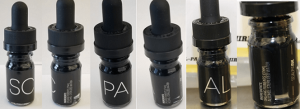

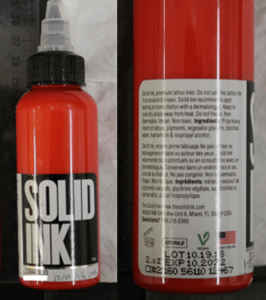
Professional tattooists certainly know what they’re doing, but even they may inadvertently use contaminated ink.
For best results, use recommended tattoo ink. Or if you’re on a budget, india ink will do, too.
Can you use pen ink for a stick and poke?
Well, this is an easy one. You can, but you shouldn’t. Using pen ink for a stick ‘n poke is a big no-no. This may be acceptable in places where there’s no other ink options, like prison, but in the outside world, do yourself a favour and get proper ink.
The ingredients used in pen ink varies widely, and it’s best not to risk putting unknown stuff in your skin. You might be putting something toxic and not know it till you’re in hospital (or worse, you never find out at all because you died from infection).
India ink is cheap and good enough for most beginners; it’s safe and natural and even professionals use it to tattoo themselves and their clients. But if you can afford it, professional tattoo ink from a reputable brand will help you keep your mind at ease that you’re not injecting poison in your skin.
The risks involved with DIYing your tattoos
Poke tattoos are fun and all, especially if you’re young and under the influence of alcohol. However, there are certain risks you should be aware of before you put needle to skin (or more accurately, cut skin with needle):
- Skin inflammation
Inflammation may occur right after your tattoo is done, or during the healing process. For instance, if you use too much ointment or cream during aftercare, inflammation may occur and delay the healing process.
- Skin infection
Since DIY tattoos often occur in non-hygienically controlled environments (like in a professional tattoo studio), the risk of infection is much higher. For example, if you’re getting tattooed in your college bedroom, chances are it’s not 100% sterile.
The most common infection brought about by poor tattooing practice is staph infection. The staphylococcus bacteria are commonly present on our skin. However, there’s a chance that this bacteria can enter the bloodstream and infect vital organs via a tattoo.
- Allergic reaction to ink
This is understandable enough. You’re essentially putting a foreign object in your body, and if you turn out to be allergic to that object (the ink), then tough luck. Fortunately, most allergies can be treated with medication. If the tattoo ink allergy turns out to be severe, please speak with your GP asap.
- Bloodborne diseases
This can be avoided by not using shared needles. Always, always sterilise your needles or better yet buy a bunch of pre-sterilised, single use needles for when you feel the urge to tattoo yourself or your friend. This study might convince you to do the right thing.
- Keloids
If you’re prone to developing keloids, then a poke tattoo – or any other form of tattoo, for that matter – should probably be off the table for you. Please speak to your GP before you do anything you’ll regret.
A brief history of stick and poke tattoos
If you’re wanting to know more about stick ‘n poke tattoos through the millennia, scroll down. I gathered some of the most relevant facts I thought you may be interested in!
So, long before tattoo machines came into the picture, hand poke tattoos were probably the only way to get inked. Obviously, different cultures and different places meant different materials were used. But the general idea of sticking and poking the skin remained the same throughout the history of tattoos.
Polynesia

A pointed bone (Photo by Alexander Andrews)
The oldest tattoo kit discovered in Polynesia dates back almost 3,000 years! And what’s even more fascinating is that these bone combs are thought to have been carved out of human bone and sea bird bone. Of course, since electricity was still a few millennia away, inking the skin was – without a doubt – a manual process.
Take note, however, that even though modern tattooing machines are widely available, the islanders continue to use similar tattooing implements as part of their culture and tradition.
Otzi the Iceman
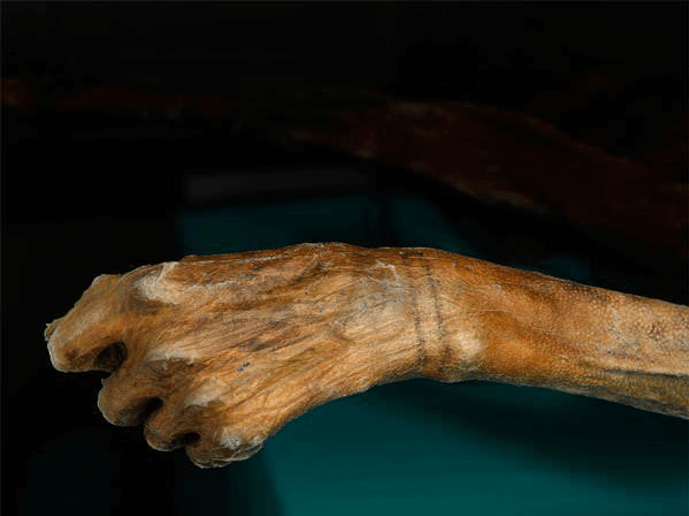
A snapshot of Otzi’s tattoos on the wrist (Image source)
Otzi the Iceman (not his real name because we have no way of knowing what it is) was discovered in the Otztal Alps in 1991. He is said to have lived 5,000 years ago (between 3400 and 3100 BC). What’s really interesting about Otzi is that he had 61 geometric patterns tattooed on his body, however, scientists think these tatts aren’t decorative. They believe these tatts were therapeutic or medical in nature since the tattooed area aligns with known acupuncture spots.
The women of ancient Egypt
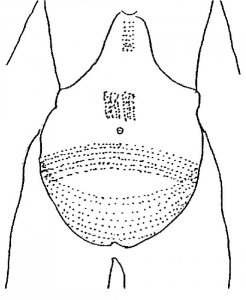
Common location of tattoos in ancient female Egyptian mummies (Image source)
Ancient Egyptian men also got tattoos, but the oldest mummies were of women who sported tattoos in interesting parts of the body. Scientists and archaeologists initially thought the tattooed women were nothing but lowly prostitutes and slaves. But the discovery of high priestess’ Amunet’s tattoos showed this theory to be false (she can’t be both priestess and prostitute, right?).
It was discovered that the women’s tattoos were often located in the abdomen, breasts and upper thighs (see image above). The current theory is that these tattoos offer spiritual protection for women as they go through pregnancy and childbirth. And unlike Otzi’s geometric patterns, the women’s tattoos were figurative and decorative in nature.
Lastly, according to researchers, the process of tattooing in ancient Egypt was highly similar to current techniques, which is tattooists stuck and poked ink-tipped needles on skin.
Final thoughts
Stick ‘n poke tattoos are just as permanent as machine-made tattoos. However, there are certain risks involved with DIYing your tattoo at home or having a hopefully sober friend do one on you. Weigh the pros and cons of tattooing before getting one, so you don’t regret it later on.
